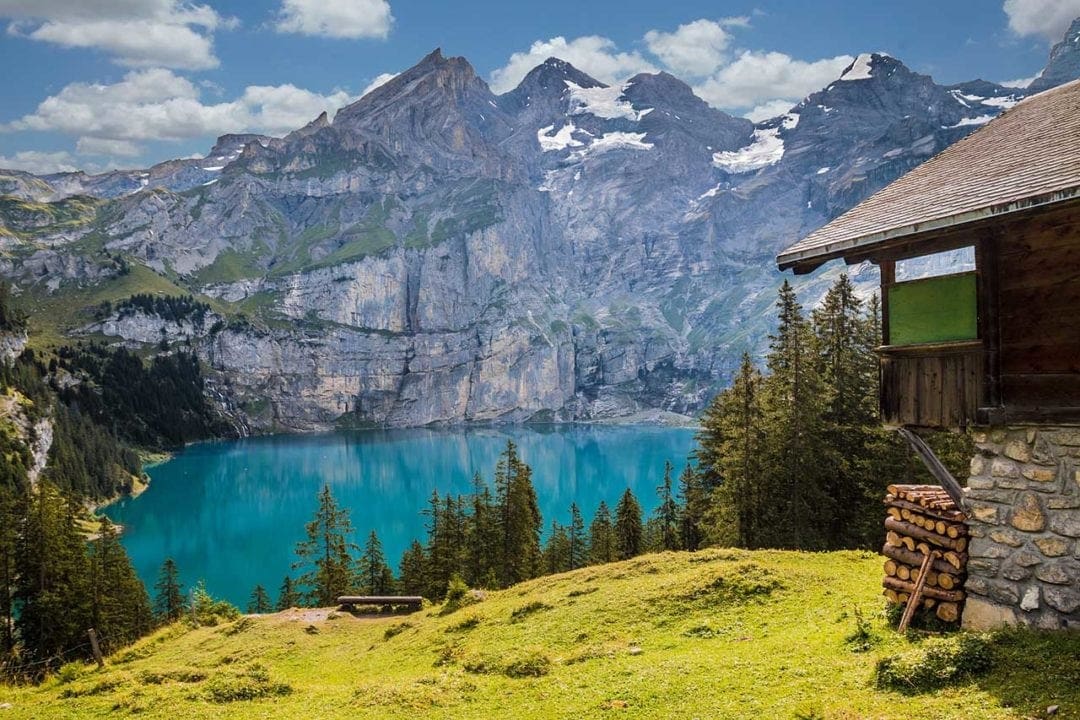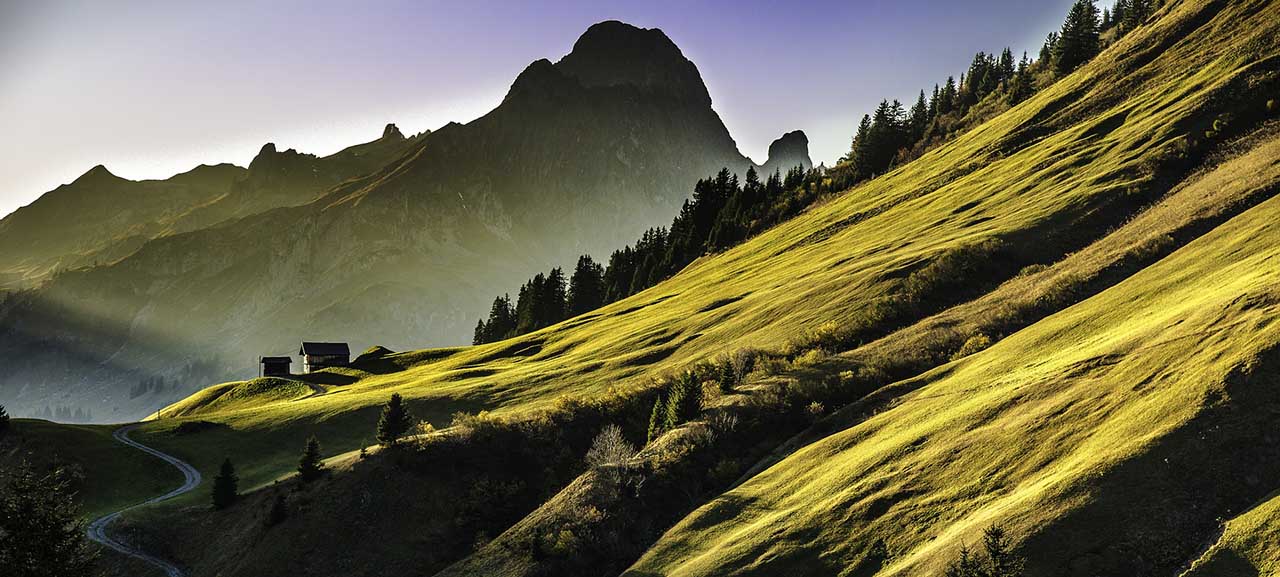Taking sharp landscape photos isn’t difficult. It just requires patience and the discipline to religiously check your gear and camera settings with each shot. In this tutorial we’ll show you how to shoot landscape photography that’s razor sharp straight from your camera.
Do these 10 things and we guarantee you can capture sharp landscapes every time…
01 Don’t skimp on a tripod
Everyone wants a bargain, but if there’s one camera accessory where you should spend as much as you can, it’s a tripod. Photographers often suggest one get a ‘sturdy’ tripod
If you shoot landscapes you’ll know that sharpness is paramount, so you might consider buying a tripod without a centre column but can still get the camera to up your eye level without having to extend all the legs.
You might also look for a tripod that offers spiked feet. This is an invaluable feature if you’re setting up your tripod in the sea, for instance.
And finally, don’t forget about the tripod head. These are often an after-thought by photographers but a quality head can go a long way towards keeping your images sharp. Cheap ball heads can suffer from what is called ‘image creep’. This is a common phenomenon where your carefully composed scene slowly drifts in the viewfinder over time.
A three-way head is the most stable and can stop image creep; however the downside is its extra knobs and can slow down your composition time when you need to fine tune your framing.
02 Use your body as a wind block
This is one that costs you nothing! If you’re shooting landscapes in exposed locations, even the sturdiest tripod may not be enough.
A simple trick you can use to prevent camera shake in these situations is to position yourself between the direction of the wind and your camera. This effectively creates a little bubble of stability around your camera. Of course, this only works if the wind is blowing from behind and you’re not shooting into the wind.
Many tripods now also offer a hook beneath the head or at the end of the centre column. You can use this to attach a weight – you can even use your camera bag. This gives your tripod a lower centre of gravity and makes it more stable. The lower you hang the weight – ideally just off the ground – the more stable it will be.
03 Get yourself a remote release
Once again, even with the sturdiest tripod you can move your camera ever so slightly, but just enough to spoil an image. Touching the shutter button creates vibrations in your camera which can cause camera shake. Your images might look fine on the back of your camera, but blow them up on the computer and the fine details might look soft.
Hands-free is the best way to ensure sharp landscape images, and a remote release is the tool you need. You can buy cabled or wireless remotes, and some cameras allow you to control the shutter via an app on your smartphone. Any of these will serve you just fine.
You can also use your camera’s self-timer function to trip the shutter, but keep in mind that if timing is critical to your shot – such as waves at the beach – you’re better off using a remote release. And they’re not that expensive to purchase.
04 Turn on your mirror lock-up feature
Those vibrations we talked about inside your camera… a lot of that comes down to the mirror bouncing up and down as you take a photo. Particularly at slower shutter speeds this can soften your finer details.
Many cameras have what is called a mirror lock-up function – not to be confused with the mirror-up function used for cleaning the camera sensor. You can set this via your camera’s menu system and what this does is shift the mirror out of the way before you make the exposure.
When you press the shutter button – or your remote release! – the camera locks the mirror out of the way. You can tell this is happening because your viewfinder will turn black. After a few seconds, when any vibrations will have ceased, you then release the shutter again to take the picture.
You’ll only find this feature on DSLRs, of course, as mirrorless cameras, well, speak for themselves! Some cameras have what is called an exposure delay function that works in a similar fashion.
If your camera has neither of these functions, try using Live View mode to take your shot. In Live View your DSLR’s mirror is already out of the way, allowing the rear screen to show a direct feed from the exposed camera sensor.
05 Don’t leave image stabilization switched on
Say what?! This might sound counter-intuitive, but some image stabilised (IS) lenses can detect when your camera is mounted to a tripod and then switch off the IS system.
But not all lenses off this feature, so if image stabilisation remains active while your lens is fixed to a tripod then the system effectively goes into a ‘feedback loop’ and tries to compensate for vibrations that aren’t actually there.
And what happens is you’re left with soft images. For sharper landscapes, switch off IS.

06 Remove your filters
This is another suggestion that will probably leave some landscape photographers questioning our sanity. But the fact is, you’ll get the sharpest results from your lens when it’s naked.
Now, to be fair, there isn’t a whole of difference in sharpness between a lens with a filter and one without – and if you’re using high-quality filters, even less of a difference. But if sharpness is critical and you need all of those fine details to be sharp on a large print, take off that filter.
And before you mention it in the comments: yes, there are some camera filters that can give the impression of improved sharpness. Chief among these is a circular polariser filter. This filter reduces glare on elements like water and boosts the contrast between blue skies and clouds, which can make an image seem crisp and sharper.
What’s more, a strong ND filter will blur any moving objects in a picture, such as people walking through an urban landscape, thus making stationary objects appear sharper by contrast.
07 Break free from autofocus
As great as your camera’s autofocus system is, it’s not always accurate. Some cameras’ autofocus systems show back-focus or front-focus errors, which is a phenomenon where your lens locks focus slightly behind or in front of the subject that appears to be sharp in your viewfinder.
There are a number of more complex techniques you can use to fine tune your focus in these situations, but the easiest – and just as accurate – method is to use your Live View screen.
In Live View, the image you see on your LCD screen is taken directly from the camera sensor, so never has the phrase ‘what you see is what you get’ been more true!
You can then magnify your view of the subject as the sensor ‘sees’ it and make a more accurate assessment of your focus. This is of huge importance to landscape photographers who need a fine level of detail in their images.
What’s more, if you press the depth of field button on your DSLR you can check for focus shift.
08 Use the hyperfocal focusing technique
Hyperfocal focusing is a technique that involves manually focusing the lens a third of the way into a scene to maximise depth of field as much as possible so that your background and foreground both look sharp.
The reason you focus a third of the way into a scene is because the depth of field extends approximately one third in front of the object you’re focusing on, towards the camera, and two thirds behind it.
If you focus on the closest point in the scene, then the depth of field in front of it is essentially going to waste, and the background may fall beyond the depth of field
It’s worth noting that you image might look out of focus in the viewfinder when using this technique; this is because the image is always displayed at the lens’s largest or maximum aperture. For a more accurate view of how the image will look, press your DSLR’s depth of field preview button.
Hyperfocal focusing does have its limits: it’s unlikely that you’ll be able to squeeze both the distant horizon and something close to the front of the lens into the depth of field, for instance. But it can be an effective way if increasing sharpness at normal shooting distances.
The hyperfocal distance varies according to the combination of camera, lens focal length and aperture being used. Once these are set, you can work out where to focus using a hyperfocal distance chart, or by downloading one of the many hyperfocal distance smartphone apps that are available.
Of course, to set the hyperfocal distance you’ll need a lens with a built-in distance scale. If yours doesn’t, you can measure the distance using a tape measure or laser measuring tool, or estimate it using Live View and depth of field preview to ensure that details remain sharp.
09 Avoid apertures of f/22 or smaller
Taking control of your aperture is an important tool for landscape photographers, which is why many use their camera in Aperture Priority or Manual exposure mode. Landscape photographers often dial in a small aperture (high f numbers) to maximise the depth of field in their images… but a small aperture only makes an image sharp up to a point.
It might sound counter-intuitive, but you should avoid the smallest apertures (typically f/22 and higher). Even though these will give a you a very large depth of field, the effects of diffraction are much more noticeable at smaller apertures.
Diffraction is a type of distortion caused by stray light hitting the edges of your lens’s aperture blades as it passes through. The light rays are bent and dispersed, causing the image to appear softer. Diffraction actually happens at all apertures, but the proportion of ‘bent’ light rays is greater at smaller apertures.
10 Hire a pro lens
Professional camera lenses are better corrected for optical defects and are generally sharper than their amateur counterparts, but their price tags are usually much more than one can afford – or justify if photography isn’t your business.
This is where hiring a lens for a particular shoot can be very economical. Hiring a high-quality lens lets you shoot with the sharpest glass when it matter for a fraction of the cost of buying one.
Tilt-shift lenses enable you to use larger apertures than you would typically use for landscapes. These apertures produce sharper images, but they lack the depth of field required to keep both foreground and background details sharp at the same time. However, you can adjust the ’tilt’ of a tilt-shift lens to increase the amount of a scene that is in focus.



